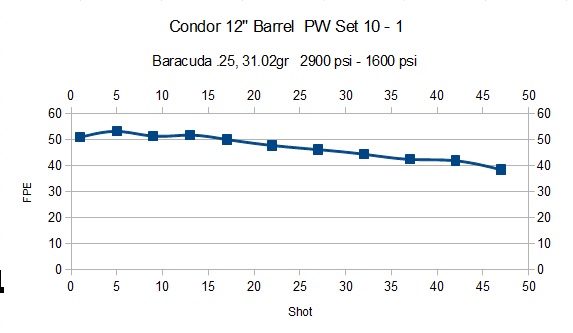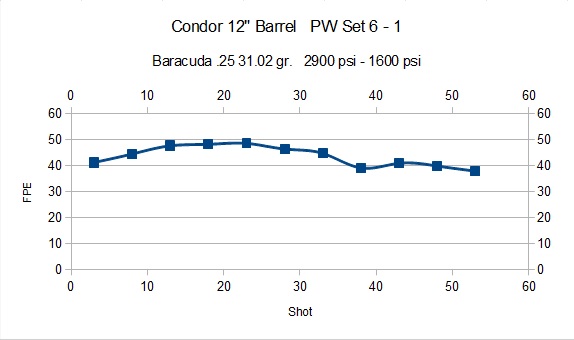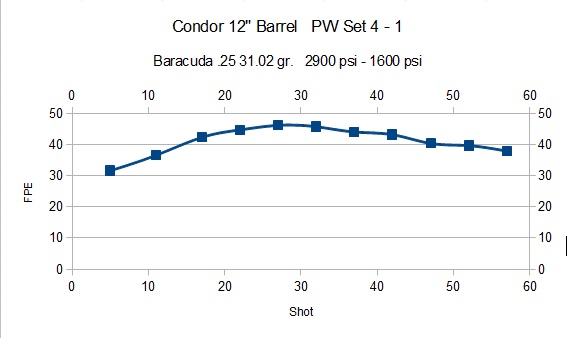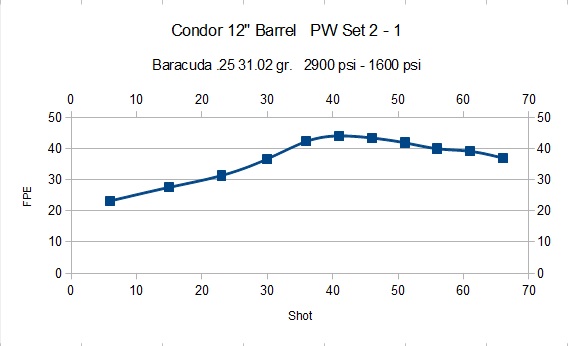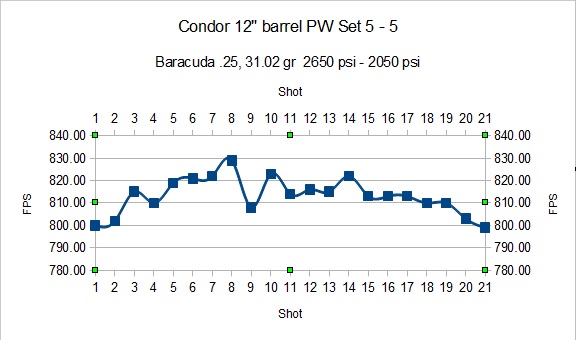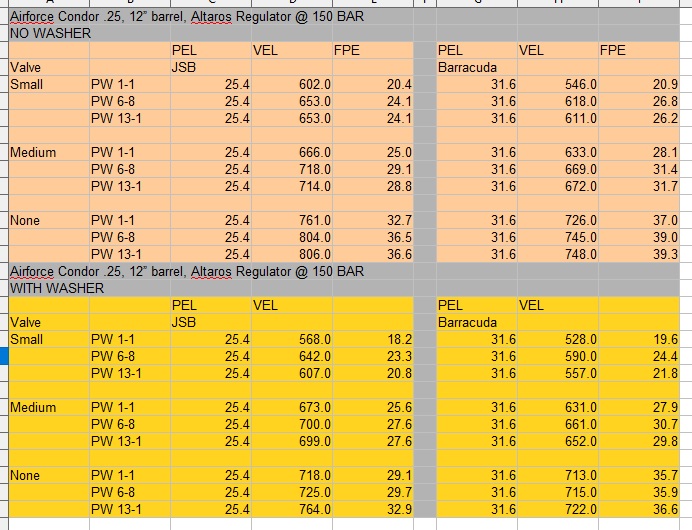G
Guest
Guest
I recently purchased a .25 Condor SS that had been modified. As far as I know the only mod was a 95 gram brass hammer with what looks like a teflon guide.
With the gun at 1-1 I charged it to about 3k psi and shot a string of 72 shots alternating between H&N Barracuda and JSB Kings. This was to allow me to evaluate the power curve with both pellets in one go. It gave me 36 data points on even numbers for the 'cudas and 36 data points on the odd numbers for the Kings. The 'cudas started out at 55 fpe and over 72 shots ended up at about 25 fpe. The Kings started out at about 50 fpe and over the course of 72 shots ended up at about 24 fpe. This motivated me to replace the heavy hammer with a stock hammer which I ordered from Talon Tunez.
Today I replaced that heavy hammer and charged the gun to about 2.2k psi. I shot only six shots (JSB Kings 25 gr), one was an error 2. I used different settings and this is the result:
1-1 359 fps
4-1 566 fps
6-8 621 fps
8-1 782 fps
13-1 865 fps (loud)
This encouraged me as my hope is to tame this beast and bring it back down to around 38 to 40 fpe and get the shot count up over 50 or so usable on the curve. Before the change the first shot was the hardest and every shot thereafter dropped off somewhat.
Do these numbers (these new numbers) seem to be in the ball park for a stock Condor SS in .25 at 2200 psi?
With the gun at 1-1 I charged it to about 3k psi and shot a string of 72 shots alternating between H&N Barracuda and JSB Kings. This was to allow me to evaluate the power curve with both pellets in one go. It gave me 36 data points on even numbers for the 'cudas and 36 data points on the odd numbers for the Kings. The 'cudas started out at 55 fpe and over 72 shots ended up at about 25 fpe. The Kings started out at about 50 fpe and over the course of 72 shots ended up at about 24 fpe. This motivated me to replace the heavy hammer with a stock hammer which I ordered from Talon Tunez.
Today I replaced that heavy hammer and charged the gun to about 2.2k psi. I shot only six shots (JSB Kings 25 gr), one was an error 2. I used different settings and this is the result:
1-1 359 fps
4-1 566 fps
6-8 621 fps
8-1 782 fps
13-1 865 fps (loud)
This encouraged me as my hope is to tame this beast and bring it back down to around 38 to 40 fpe and get the shot count up over 50 or so usable on the curve. Before the change the first shot was the hardest and every shot thereafter dropped off somewhat.
Do these numbers (these new numbers) seem to be in the ball park for a stock Condor SS in .25 at 2200 psi?
